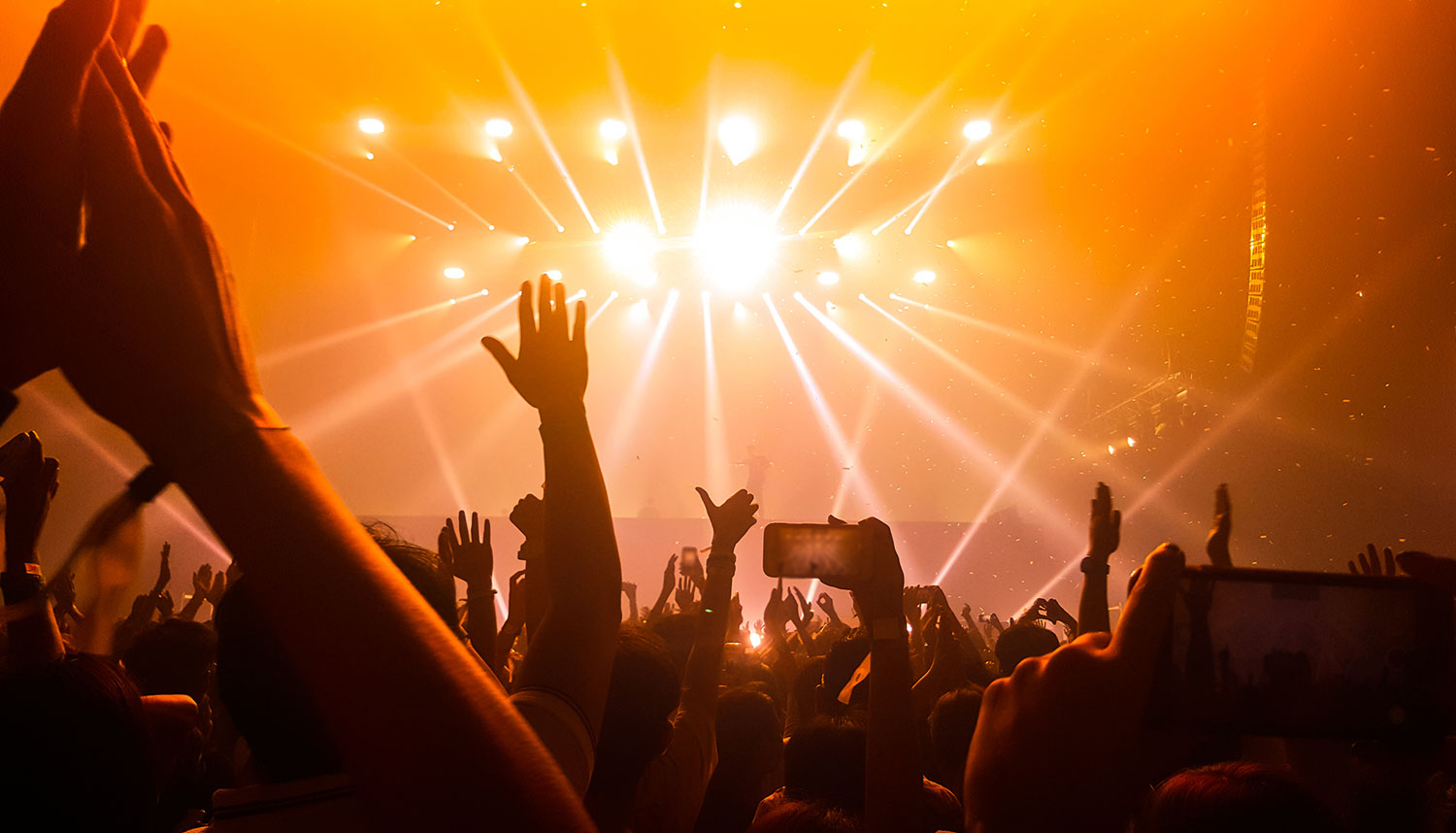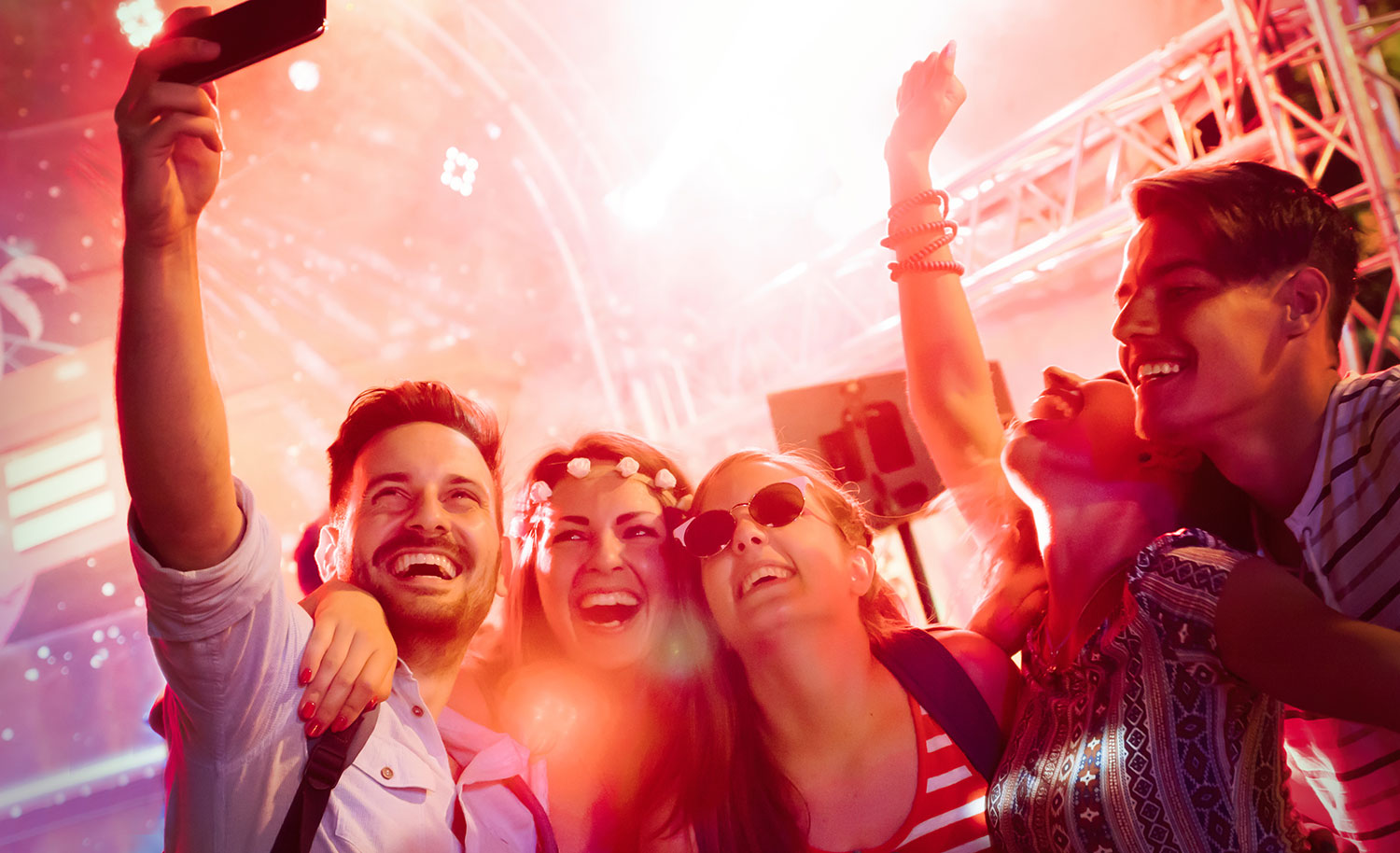
Image rights at events in Switzerland
Which rights are to be observed in event and stage photography?
Attending a concert, a theatrical performance or a special show is always associated with a unique atmosphere that one would like to remember for a long time. To capture this unique experience, you quickly take a few snapshots or even really expressive photos with the smartphone or digital camera. But what about the image rights of the performers and artists on stage or even the audience that you have in the picture?
The following explains what you have to watch out for in terms of image rights when you take pictures at events in Switzerland. To begin with, here are the most important points at a glance:
Always get permission to take pictures at events if
- one or more people are in the focus of the picture or stand out notably.
- it is about children – get permission directly from the parents.
- you want to use the images for commercial purposes – get permission in advance from the event organizer (accreditation)
- you want to share the pictures on social networks, your website or blog.
- it is a private event and photography is not expressly prohibited.
- you are not sure because you would like to ask lots of questions.
As a visitor of an event, you should
- pay attention to the information on any photo and video recordings on the tickets.
- check the terms and conditions and event information of the organizer with regard to the regulations on image rights.
The Personal Right to Images in General
In Switzerland, the so-called “right to one's own image” is a general right to privacy and is governed by the civil code and data protection in the Federal Law. It is intended to protect the privacy of the photographed person. In the case of a mere editorial reporting and at public events, usually no consent of the photographed persons has to be obtained. However, consent of the person depicted is always necessary if the photo, for example,
- is to be used for advertising purposes,
- falls under sensational or scandal reporting (accidents, exposing situations),
- represents a targeted invasion of privacy that is considered investigative
It is somewhat different when children are seen in the picture. They enjoy a higher protection as far as personal rights are concerned. For this reason, you should ask the parents for permission to take the photo instead of the child itself.
Image rights at events in Switzerland
On events such as concerts, plays, stage shows and the like, the scope of the right to one’s own image mainly depends on where and in which context the event takes place. However, the above points regarding the consent of a person imaged or highlighted individually are valid at any time.

Photographing at public events
As mentioned above, taking pictures at public events is usually not a problem. In general, an event that is “public” is an event that is freely accessible to everyone, such as one has free access to an urban park or the marketplace. When you take pictures of the event or when you capture the atmosphere photographically, usually other visitors to the event are inevitably seen in the picture. These are usually considered as an accessory of the main motive, so no consent of each person depicted is required.
Only if a person stands out notably or is photographed as a close-up, the right to his/her own image is violated without permission. When in doubt, it always makes sense to make the faces of the people in the picture unrecognizable by blurring them already when taking the pictures or in the course of post-editing.
Special features of private events
Concerts, plays and the like are generally only accessible with a valid ticket and usually take place in private premises or on private land. Basically, the house right of the owner or the organizer who can decide on the photographing at his event will apply here. If the organizer is not the owner of the location, the image rights are contractually governed between the two parties.
Professional photographers who want to take pictures for reporting or advertising purposes must obtain prior approval from the event organizer and submit a clear order from their editors. Such accreditations are now often tied to strict contracts. Thus, the photos may be subject to review by the event organizer, the location owner and / or the artist prior to release for editorial use. In some cases the photographer transfers the image rights to the event organizer within the framework of the contract.

If taking pictures is not expressly prohibited by appropriate signs, announcements or the like by the event organizer, private photos in memory of the special experience are often tolerated. For example, selfies and photos of the crowd generally do not infringe on personal rights, as long as the photos are for private use only. However, if you want to share the shots on social networks, for example, you must make sure that no person stands out or stands in the focus of the picture without approval.
The right to one’s own image with celebrities
Without consent, no person may be in the focus of a photo – but what about the main actors of an event who should be the focus of the event photos? Of course, the personal rights also apply to artists such as singers, dancers or actors. Only when they appear in public, no consent of the celebrity is required for a photo. However, as concerts and performances are mostly private events, in this case the event organizer makes decisions in consultation with the artist.
If private photos are in principle allowed, the singer or actor on the stage may of course stand out in your shots. But here, too, attention should be paid to the demarcation of private use: This refers exclusively to souvenir photos that you would like to use for a private photo book or your private wall design.
Your own blog or various social media channels usually go beyond private use. If you would like to post your photos online, you are legally protected only with the permission of the organizer of the event.

What rights does the event organizer have when photographing and publishing photos of visitors?
The organizer of an event has to abide by the same rules regarding image rights as photographers or private persons. This means that for photos or video sequences of individual or standing-out persons, the event organizer himself or the photographer commissioned by him must request the consent of the visitor. In case of a legal dispute, the burden of proof lies with the organizer or his photographer. As the author of the event photos, he must be able to prove the consent of the persons depicted, as long as they are in the focus of the picture and not get lost in the crowd or regarded as an accessory of the main motive.
Photos and videos at major events
At large concerts, soccer matches in the stadium and at other major events, it is customary for the event to be accompanied by photographers and perhaps even televised. The guests are already expecting to be seen in photos and videos if need be. In addition, the event guests are usually informed in advance that the event will be photographed or filmed and the shots and recordings may also be published. This information is usually noted on the ticket. There you will also find the note that the purchase of the ticket is considered as approval for photos and video sequences and their publication.
Rights of the organizer at small events
For smaller concerts, band nights, small theater performances or corporate events, there are usually no tickets on which prior information on photo and video recordings could be printed during the event. Depending on the context of the event, the image rights are then regulated, for example, in the terms and conditions of the organizer. It is mostly written there that by participating in the event, the visitor agrees to be in photos and videos which are used for internal advertising purposes.
In some small events, the information regarding image rights is given in the opening speech, or the principle of visitor reaction applies. It is important to preserve the privacy of the visitors and to respect corresponding defensive reactions such as turning away or holding the hand in front of the face. In such a case, the photographer or cameraman should comply with the visitor's request and not take any photographs focusing on the person concerned.
Conclusion
The right to one’s own picture is to be observed in event photography. However, there are a few special features to note. Inform yourself before every event about whether and in which context you are allowed to take pictures. In case of doubt, ask people who are in the picture for their permission or make their faces unrecognizable. Whether taking souvenir photos or doing a media coverage – please accept the privacy of the event guests as well as the artist at any time.
We wish you a lot of fun while photographing the next event!
